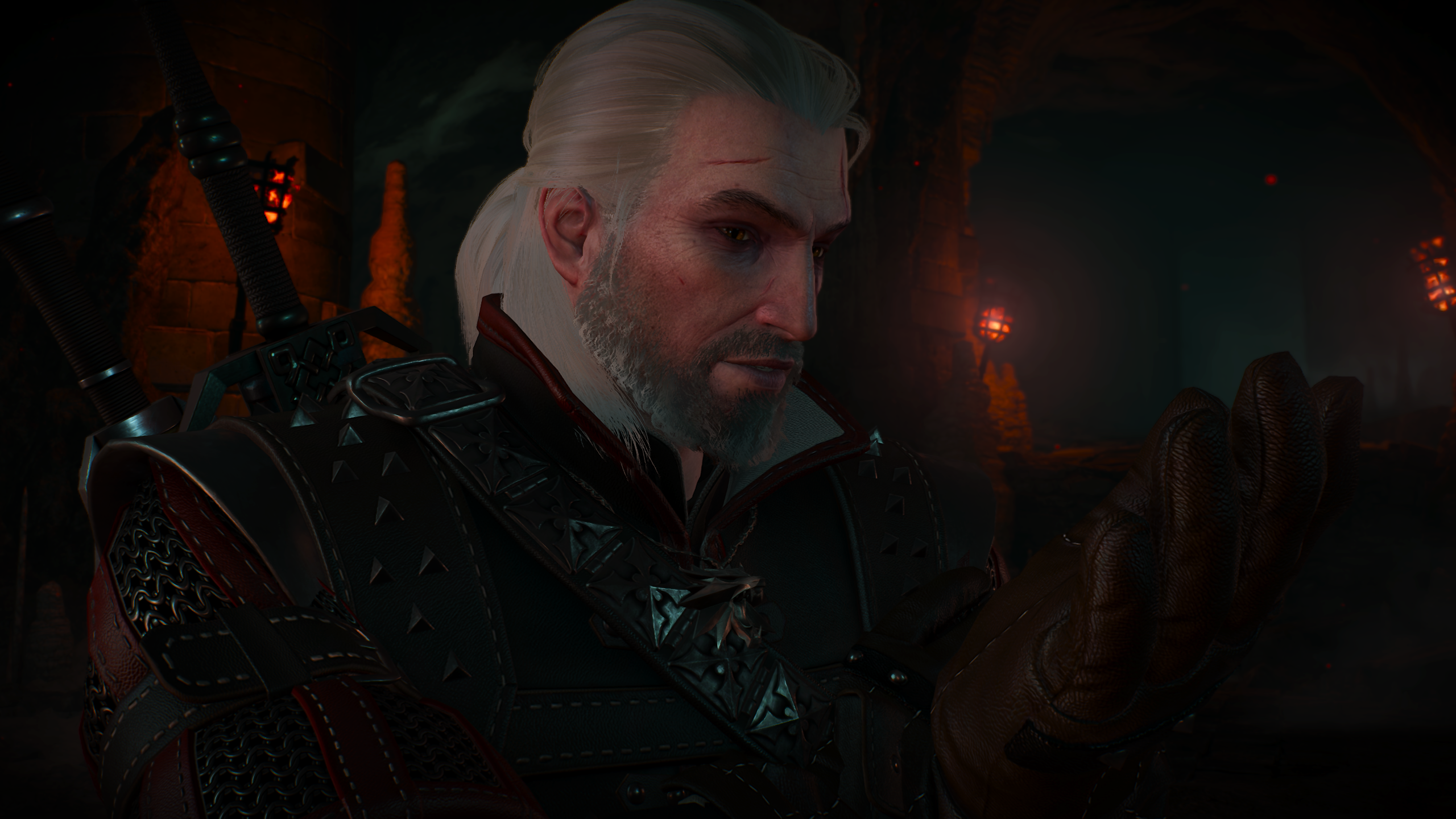
The Witcher 3 turns 10 this year—in just a few months, even—and it sure doesn't feel like it's that old. Some parts of it actually aren't: late 2022's "next-gen" update included a ray tracing overhaul, integrated a handful of mods, and even added one brand new quest, with Geralt voice actor Doug Cockle getting growly in the recording booth for the first time in years. Witcher 4 narrative designer Philipp Weber tweeted about that quest on Wednesday, framing it as a bit of a dry run for the sequel that is now in full-tilt development.
"New designers and writers worked on it preparing for the Witcher 4, together with one of our most senior quest designers, who is with us since the Witcher 1," Weber wrote. "All in all, it was the perfect start to getting back into the vibe."
When The Witcher 3's next-gen update came out, CD Projekt was only talking in vague terms about its plans for future Witcher games—the "4" in the sequel's title wasn't even a sure thing yet. Now that the studio finally showed off its plans for a Ciri-starring Witcher 4 at The Game Awards last month, the bonus quest in The Witcher 3 is the most substantial preview we have of what to expect from the storytelling in its next RPG.
I decided to play it today to see how it stands against my memories of the best of The Witcher 3, and it only took a few minutes to get back to Velen and fast travel to The Devil's Pit, the location where the quest takes place—I don't think the game's ever left my SSD in the last 10 years. In the Eternal Fire's Shadow is a quintessential Witcher quest, with a bit of combat, some spooky exploring, and a few different outcomes that hinge on your Witcher skills and how you orient Geralt's moral compass. It starts in classic form, with a conversation with a fresh-faced deacon who asks you to head into a cave where the church once locked up a whole bunch of plague victims to keep them from infecting more people.
There's a bit of dialogue that feels, well, very Geralt—you get the chance to throw shade on the church's inhumane treatment of these poor souls, but Geralt will always begrudgingly clean up someone else's dangerous mess instead of leaving it to fester. Once you head into the tunnel, things take a more interesting and personal turn—there are messages left behind from another Witcher named Reinald, and when you find him, he's clearly been possessed by an evil spirit of some kind. Your conversation (and ensuing fight) with Reinald will change depending on how much time you've spent exploring the cave.
2 years ago we released a new quest for The Witcher 3. New designers and writers worked on it preparing for the Witcher 4, together with one of our most senior quest designers, who is with us since the Witcher 1. All in all, it was the perfect start to getting back into the vibe. pic.twitter.com/VCpQ5UpLjZJanuary 8, 2025
If you're thorough, you'll end up with his recipe for a potion that buffs your attacks against his possessor, a nasty wraith called a Red Miasmal. It's totally optional, but definitely helpful if you're not loading up an endgame save file like I was. And if you don't explore the cave enough to find it, you're missing out on much of the backstory about what happened to Reinald as he tried to cure himself of the Miasmal's influence, and what role the church had in the whole situation.
Reinald himself is easily the strongest part of the quest—he's a witcher from some 300 years before Geralt's time and also of the Wolf school, giving you some fun scraps of lore about the old days of the order. And the quest upholds one of my favorite things about The Witcher's combat, tying together optional but savvy narrative choices (in this case, finding the recipe for Reinald's potion) to give yourself an advantage in a fight. It's a simple thing, but every time I took on a monster in The Witcher 3 and read its journal entry to suss out that I should fight it at midnight or use a particular oil on my blade, I felt more like I was roleplaying than at any other point.
Unfortunately the process of finding Reinald's notes means exploring a dark, confusing cave largely made up of samey dilapidated shacks. It feels constrained by what the developers could do with existing assets and a limited amount of time, but ideally a quest with this much optional exploration time would take place in an environment that's more fun to explore. That said, In the Eternal Fire's Shadow did remind me of how effectively The Witcher 3 quests flit between genre. It's a game of multitudes: high fantasy, comedy, bombastic action, and in this case a bit of eerie horror.
But how's the writing, the thing that's likely to be the most indicative of the questing in The Witcher 4? In the Eternal Fire's Shadow leans on a couple old standbys a bit too hard: Reinald's many notes scattered throughout the cave spell out his actions and mental state in a way that feels a bit more plot-contrived than logical for the character. And the dialogue between Geralt, the deacon, and Reinald as the quest wraps up has some slightly clunky lines that don't leave much up to subtext.
A couple of the quest outcomes hinge on Geralt saying either "Don't need a church to do good, priest" or "Crimes like these can't be forgiven," and it's pretty obvious how both of those are going to play out. "I'm no saint, no miracle worker," says Reinald. "Just a witcher."
In the Eternal Fire's Shadow is painting with a pretty broad morality brush, something I think my favorite quests in The Witcher 3 managed to avoid with murkier decisions. I think The Witcher is at its best when it puts personal motivations at odds with the greater stakes—so that even when you make a decision that feels emotionally correct, the outcome doesn't necessarily result in the happiest ending. But The Witcher 3 also has quests where you make more straightforward right-and-wrong decisions and also has you herding a village full of people who've been turned into pigs—it's a big game with an appropriately broad range of storytelling.
For a quest from a new team "preparing for the Witcher 4," as narrative designer Philipp Weber described it, I think In the Eternal Fire's Shadow at the very least shows CD Projekt was successful in "getting back into the vibe." But I'm actually more encouraged by how the reveal trailer for The Witcher 4 ends, with Ciri choosing to save a village's human sacrifice—only for the girl to die anyway. In another developer's hands I might dismiss the moment as a bit of tired grimdark fantasy, but The Witcher 3's Bloody Baron quest played with exactly this sort of tragedy and found a rare depth of humanity in the darkness, and I hope The Witcher 4's writers aspire to do the same.







